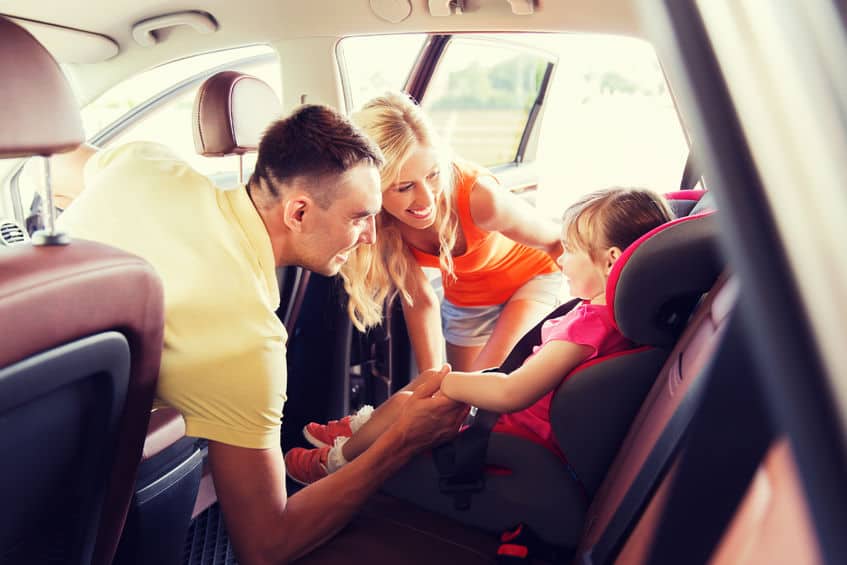When it comes to safety in the vehicle, kids need to be secured. Gone are the days of laying across the back of the car on road trips across the country to visit your grandmother and here are the days where parents are more conscious and informed. The truth is, occupant restraints reduce both the likelihood and severity of an injury while driving.
Before transitioning from a convertible car seat to a booster, there are a few things that parents should consider:
Understand the Purpose of a Booster seat | Booster seats position the seatbelt over the strongest bones in the child’s body. It helps position the lap belt across the bones of the hips, not across the soft abdomen. It also places the shoulder belt across the chest, preventing the upper body and head from moving forward during a collision.
Readiness | Is your child ready to make the move? Have they reached the height and weight limits to make the transition into a booster seat? Children should remain in their rear facing seat until they are at least one year of age AND weigh at least 10 kilograms (22 pounds) AND are walking independently.
Type of Restraints | Next, consider the type of harness for the booster seat. Though seatbelts can be used, larger but younger children may benefit from a five point harness system to keep them in the seat while the car is in motion.
The Law | In Alberta, the law requires that all occupants travelling in a motor vehicle use a seatbelt and that the belt of child safety seat is properly worn and adjusted. Keep this in mind when travelling using a second vehicle, ensuring the correct restraint is chosen for the age and stage of the child.
Age | Children under nine years of age, who weigh between 18 and 36 kilograms (40-80 pounds) or who are less than 4’9” tall should remain in the booster seat. In fact, child safety restraints are required by law for children under the age of six, who weigh less than forty pounds.
The Position | Children under the age of twelve are safest in the backseat of the vehicle with the proper restraints based on their age, height and weight. Keep those smaller children out of the front seat, to keep them safer in the vehicle.
The State of the Seat | Though used booster seats can be used for children, it’s best to purchase the seat new. Older seats may appear to be fine, but there could be microscopic cracks in the shell or weakened areas in the harness or frame which mean the child will not be properly protected in a collision.
Risk of Skipping a Booster | It’s important to realize that without a booster seat, a child is three and a half times more likely to suffer a significant injury in the vehicle. Take this into account for even those short trips where you might be tempted to skip the booster seat.
We’ve got kids in two stages – an eight-year-old in a booster seat without the five point straps, and a six-year-old in a booster seat with straps attached. Understanding the safety measures, purpose and correct use of the booster seat helps us to keep them safe.
This post is brought to you by Alberta Transportation but the images and opinions are our own.
You may also like
-
Why Team Building Activities Are Important: Benefits of Strengthening Bonds with Friends
-
The Most In-Demand Questions And Their Answers About Huawei Cloud Storage
-
Top 8 Best Meeting Scheduler Apps for 2022
-
Steps To Take If You Have Been Harassed In The Workplace
-
Australian Casinos with the Highest Payouts, Ease, and Availability Anywhere
